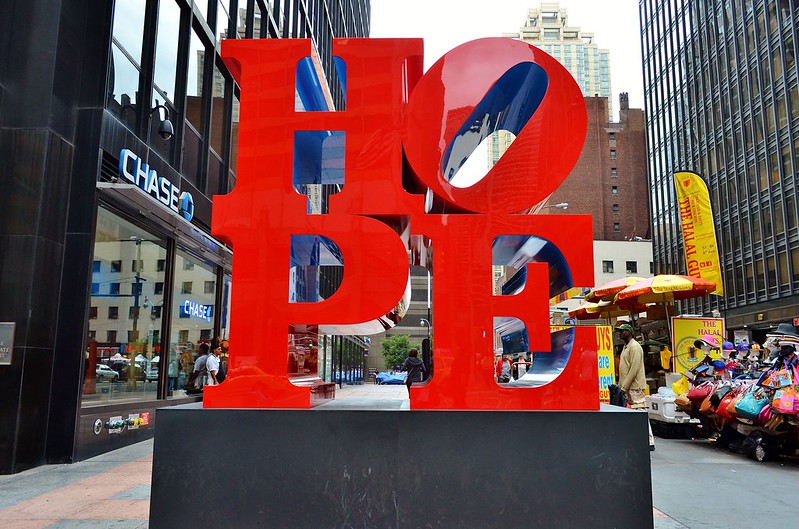Because we all suffer, we all need hope: the light at the end of the tunnel that enables us to keep moving forward. Hope allows us to strive for a goal and purpose, even through suffering.
The Christian’s hope is the heavenly Jerusalem. The Bible ends with a vision of the new Jerusalem descending from heaven, where there are no more tears but streets of gold, and there is no sun because God dwells in the center of it.
But there is another picture of Jerusalem. In the Gospel of Mark 10:32-34, we see Jesus traveling to this Jerusalem:
32 Now they were on the road, going up to Jerusalem, and Jesus was going before them; and they were amazed. And as they followed, they were afraid. Then He took the twelve aside again and began to tell them the things that would happen to Him: 33 “Behold, we are going up to Jerusalem, and the Son of Man will be betrayed to the chief priests and to the scribes; and they will condemn Him to death and deliver Him to the Gentiles; 34 “and they will mock Him, and scourge Him, and spit on Him, and kill Him. And on the third day He will rise again.”
It is time for the crucifixion. Jesus foretold this to his disciples twice before, and here he does so again. He has gained many followers but also many enemies, the most dangerous of whom live in Jerusalem.
In this scene, Jesus is walking uphill, forehead set like flint, toward Jerusalem. Behind him are his disciples, following, dismayed and afraid. They are surprised that Jesus would go to Jerusalem when he knows full well that the authorities in Jerusalem intend to kill him. And besides being confused, they are afraid.
There are many roads to Jerusalem, but only one for the disciples: following behind Jesus. Despite fear and confusion, they continue to follow. Their legs might be weak. Their foreheads are not set like flint, like their Lord’s. They may have butterflies in their stomachs or carry a burden of dread, yet they continue to follow.
Maybe this is all that their Lord expects of them. Jesus knows how they feel, but he isn’t going to comfort them by turning back. Going downhill, away from Jerusalem, isn’t an option. There is no easy road to the new Jerusalem, only pain and suffering.
He does attend to them in this story. He pauses his uphill trek to comfort them by giving them two things. First, he tells them what is going to happen. Bad things are going to happen, very bad things. In telling them this, he affirms the expectation they dread. He also tells them that he knows it was all planned out beforehand. God is sovereign over suffering, and He would never orchestrate defeat. Therefore, he must have a purpose in it.
Secondly, he gives them hope. “He will rise again.” The suffering will be terrible, but it will result in great joy. This suffering will bring his disciples the greatest joy they will ever know.
We will later learn in the Garden of Gethsemane that Jesus doesn’t want to go either. He will ask his Father for another way. But there will be no such solution. The whole world has been groaning, suffering for eons, and the only cure is for Jesus to suffer for us. So he will ascend the mountain. He will offer himself up as a sacrifice for the sins of the world.
This is our hope and our joy: the great sacrifice of our precious Savior has redeemed us, and a new Jerusalem is descending for us.
Hope is a disposition that views life as essentially good: though bad things have happened, and although bad things are sure to happen again, life is good. Hope looks to the future and sees sunny days. Research shows that people who hope and have faith have better resilience during difficult times.
When those horrible things show up on the horizon, we become anxious. Anxiety is a healthy response to bad events. I encourage you to keep walking straight ahead. Don’t try to avoid the anxiety-provoking situation or your anxiety. Do try to fix it, or at least mitigate it, but you may just have to walk through it. Walk through it with hope, which says, “I will overcome this,” or, “I will see better days ahead.”
To suffer well is to do so with faith in God, that He has sovereignly ordained our suffering and that He has done so for our good. We will endure if we believe that God has a plan for us.
My prayer is that my clients get well, but until they do, I pray that they will learn to suffer well. I pray that they will be resolute in their suffering and that, despite their pain, they will continue to love God and their neighbor. I pray that they will suffer with hope. They have a Savior seated at the right hand of God, interceding for them.
